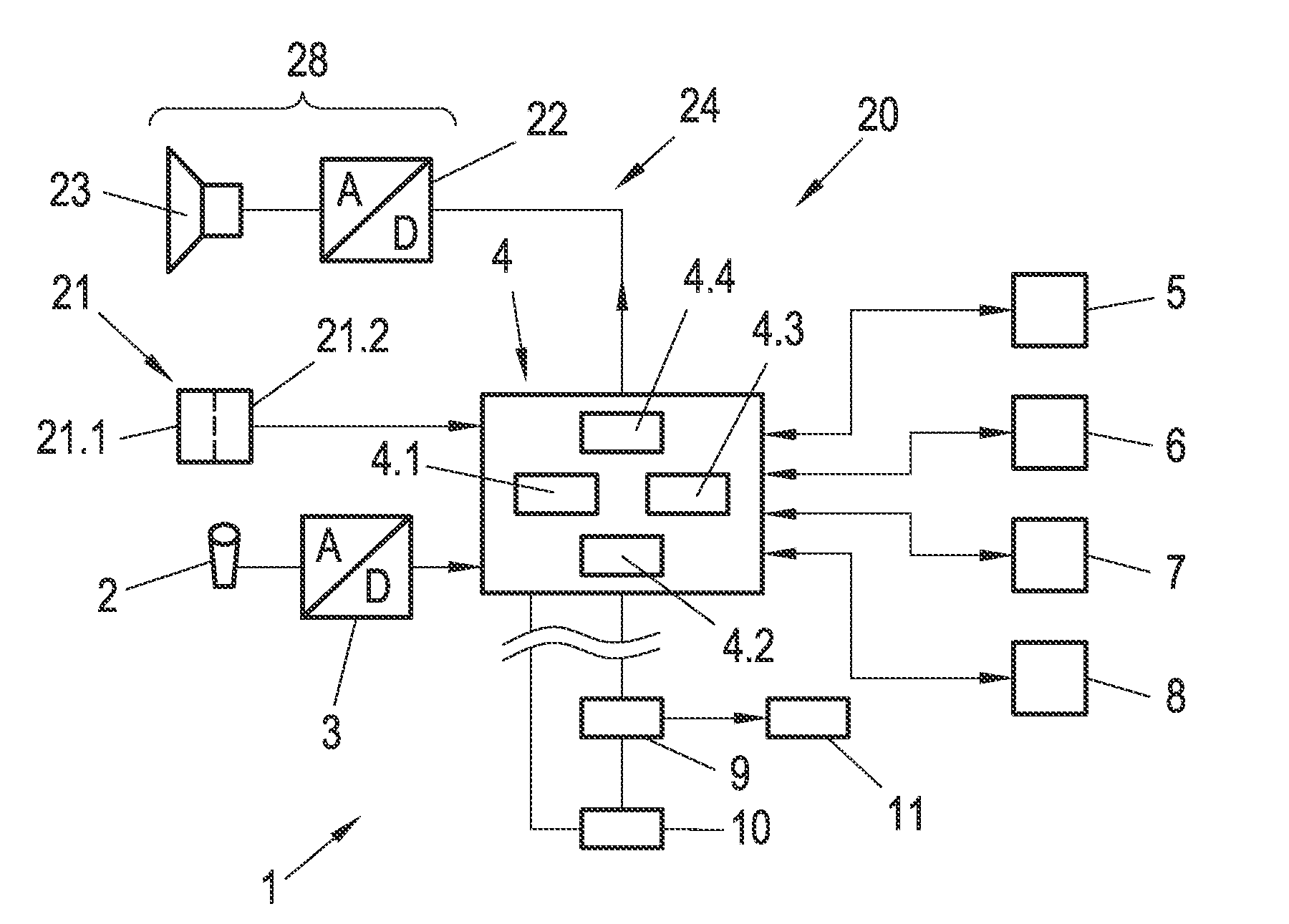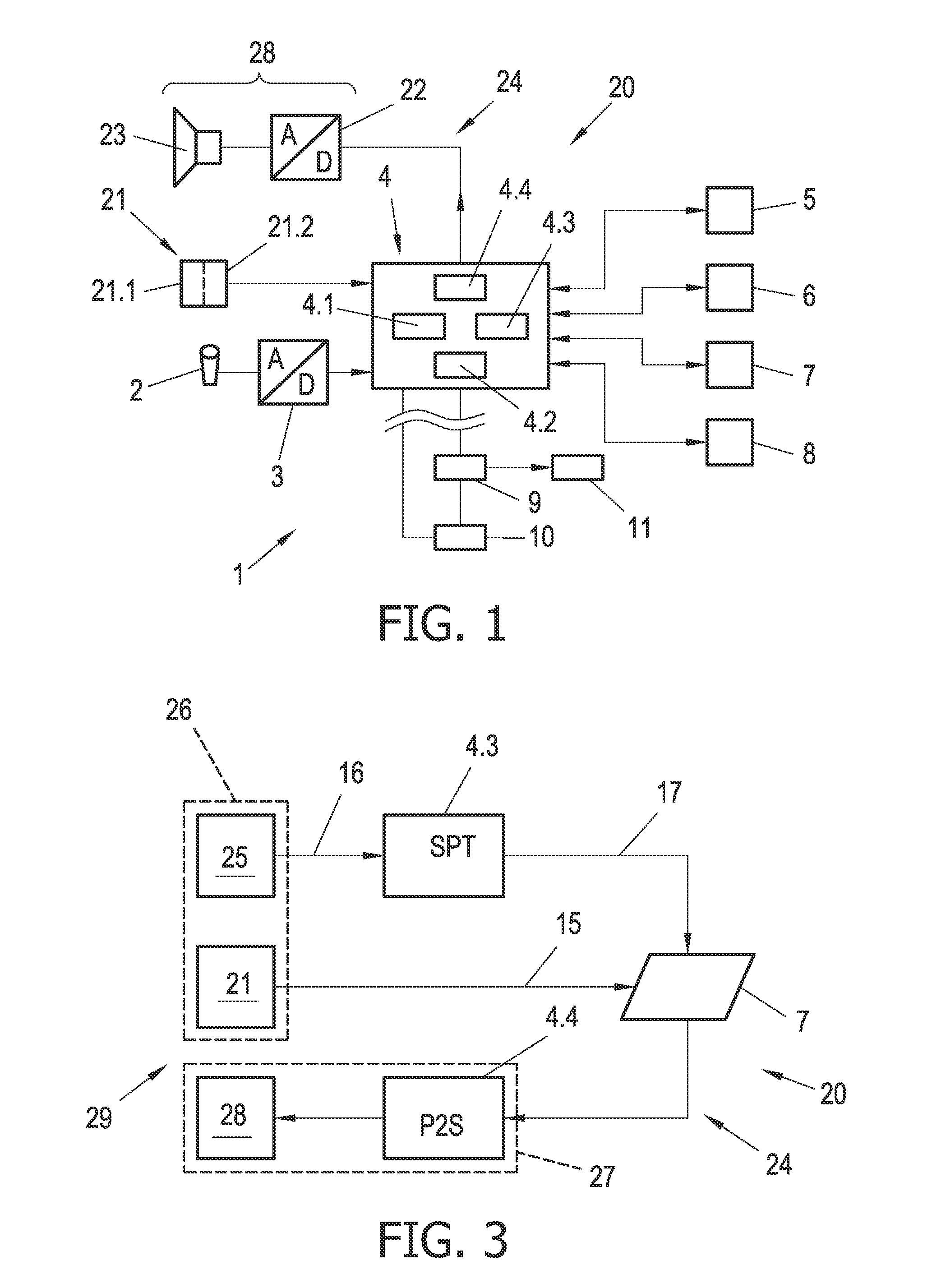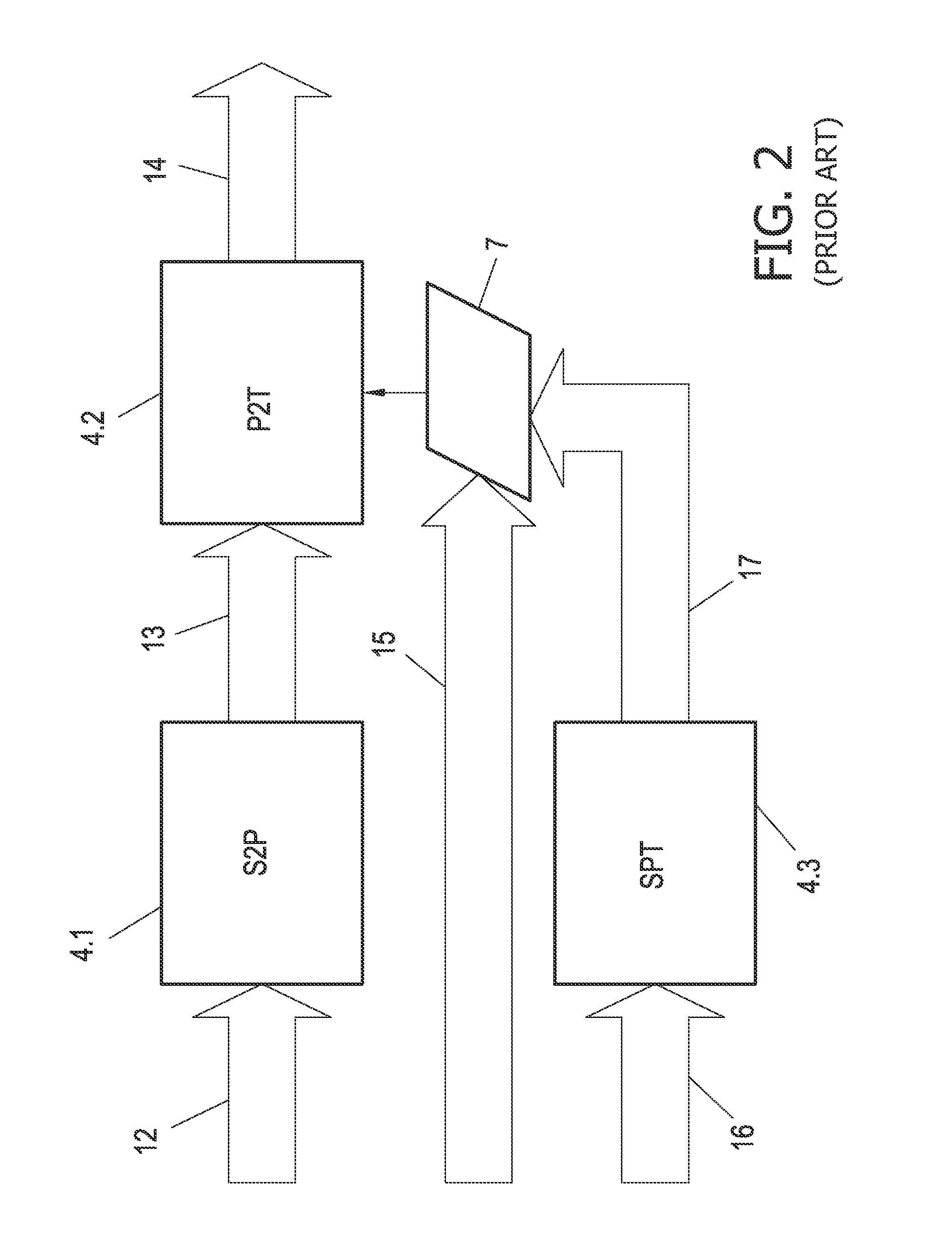Method and system for creating or updating entries in a speech recognition lexicon
- Summary
- Abstract
- Description
- Claims
- Application Information
AI Technical Summary
Benefits of technology
Problems solved by technology
Method used
Image
Examples
Embodiment Construction
[0035]In FIG. 1, a schematic representation of a speech recognition system 1 is shown which is used to automatically transcribe a spoken text into a text file. This speech recognition system 1 comprises sound input means 2, i.e. a microphone, an A / D-converter 3 which converts the analogous audio signal of the microphone 2 into digital audio data which are applied to specific speech recognition means 4 which usually are realized by computer means 4 in combination with respective software modules and data modules. In particular, it is usual to use an acoustic reference data model 5 containing phonetic characteristics for the respective user, a language data model 6 to consider specific probabilities for word transitions dependent on the specific user and a lexicon data model 7 which contains recognizable words including information how they are pronounced by the specific users. Furthermore, it is also possible to use a grammar data model 8 where data referring to number grammar, date ...
PUM
 Login to View More
Login to View More Abstract
Description
Claims
Application Information
 Login to View More
Login to View More - R&D
- Intellectual Property
- Life Sciences
- Materials
- Tech Scout
- Unparalleled Data Quality
- Higher Quality Content
- 60% Fewer Hallucinations
Browse by: Latest US Patents, China's latest patents, Technical Efficacy Thesaurus, Application Domain, Technology Topic, Popular Technical Reports.
© 2025 PatSnap. All rights reserved.Legal|Privacy policy|Modern Slavery Act Transparency Statement|Sitemap|About US| Contact US: help@patsnap.com



